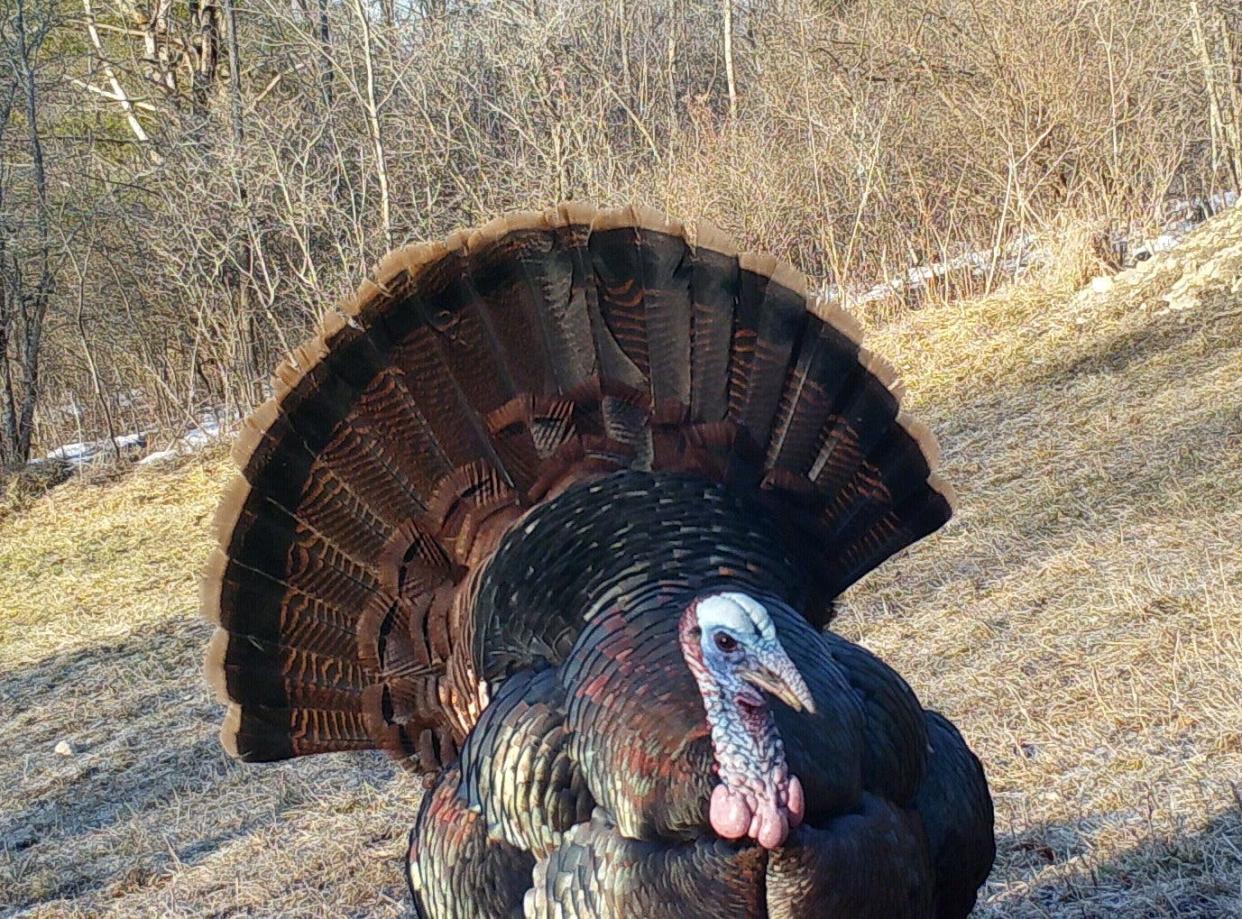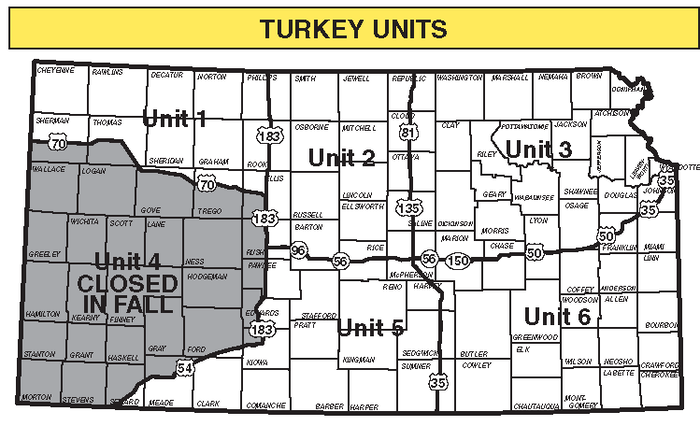Here's why Kansas officials are canceling fall wild turkey hunting season

The Kansas wild turkey population has been decreasing for 15 years, though Kansas Department of Wildlife and Parks officials aren't sure why.
That population dropped by about 60% between 2008 and 2021, KDWP chief legal counsel Dan Riley told the Kansas Legislature's Joint Committee on Administrative Rules and Regulations on Tuesday.
"Most of the biologists suspect that there's probably some sort of a biological issue, either a parasite or some sort of a germ, that's causing the hatch numbers to drop," he said. "Because it's not actually killing healthy turkeys. It's causing the hatch numbers to drop significantly, so the actual turkey crop in any subsequent year is diminished."
Kansas scraps fall turkey hunting season
The Kansas Wildlife and Parks Commission responded by voting Thursday in Bonner Springs to adopt restrictions allowing less hunting of that gobbling game bird, in an effort to help its population bounce back.
Commissioners voted 6-0 to do away entirely with the fall turkey hunting season.
They also voted 6-0 to place further restrictions upon limits already in place regarding the spring turkey season.
Those include allowing less hunting by out-of-state residents and reducing the bag limit on wild turkeys to one each in north-central and northwest Kansas. One-turkey bag limits are already present in eastern, central and south-central Kansas.
Why is the turkey population dropping in Kansas?
KDWP biologists have studied "in great detail" to try to figure out why the state's population of wild turkeys has dropped, Riley told the Joint Committee on Administrative Rules and Regulations on Tuesday.
Those biologists have "a lot of theories but not much in terms of really conclusive ideas," he said.
The joint committee hears reports from state agencies regarding changes in rules and regulations. Committee members can't do anything about those changes except make comments about them.
Other states have seen similar reductions in wild turkey populations, due apparently to lower reproductive rates, Riley said.
More: 'Not the norm': Kansas hunter shoots quadruple-bearded turkey
Why do away with Kansas' fall turkey season?
The fall turkey season in Kansas has historically been a "secondary season," which doesn't bring out as many hunters as the spring season does, Riley said.
The number of fall turkey hunters statewide has decreased substantially since 2015, at a rate of about 20% per year, KDWP said in a news release posted this month on its Facebook site.
The state beginning in fall 2020 started arranging for the fall turkey season, which begins Oct. 1, to end on Nov. 10 instead of Jan. 31, its previous ending date, that release said.
"The estimated annual statewide fall harvest is less than 500 birds," it said. "While this is a small proportion of the statewide population, fall harvest is an additive source of mortality for turkeys — especially when hens are harvested. For these reasons, staff are recommending suspending the fall season statewide, beginning with the 2023 season."
More: Kansas nixes new sales of out-of-state turkey hunting permits in effort to curb COVID-19
How confident are Kansas officials that the turkey strategy will work?
"It's unknown whether eliminating X number of tags will actually add X number of turkeys back into the flock," Riley said Tuesday. "So this is an ongoing research project."
The natural desire of KDWP biologists is to increase the state's wild turkey population, Riley said.
"We want the numbers back up, because no one likes it when we have to make these kind of reductions," he said. "But at this point, we just need to see what has a positive impact, so we know which direction to go."
Good turkey hunting expected this spring in at least one state

This spring looks to be good for turkey hunting in at least one eastern state.
The Erie, Pennsylvania, Times-News reported that state is expected this year to see an above-normal number of 2-year-old turkeys, which it said are typically harvested at a higher rate than gobblers of any other age.
A key reason so many 2-year-olds should be present is because newly hatched turkeys and their predators there in 2021 gorged on cicadas that emerged that year after 17 years underground, which saved some of the young birds.
Eastern Kansas is next expected to see 17-year cicadas in 2032.
Contact Tim Hrenchir at threnchir@gannett.com or 785-213-5934.
This article originally appeared on Topeka Capital-Journal: Officials take steps to reduce hunting of wild turkeys in Kansas

